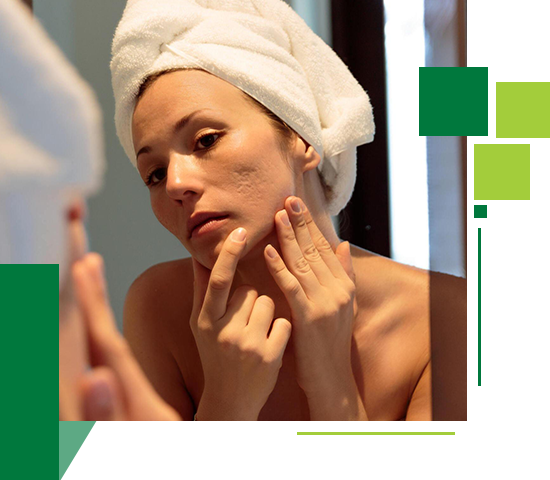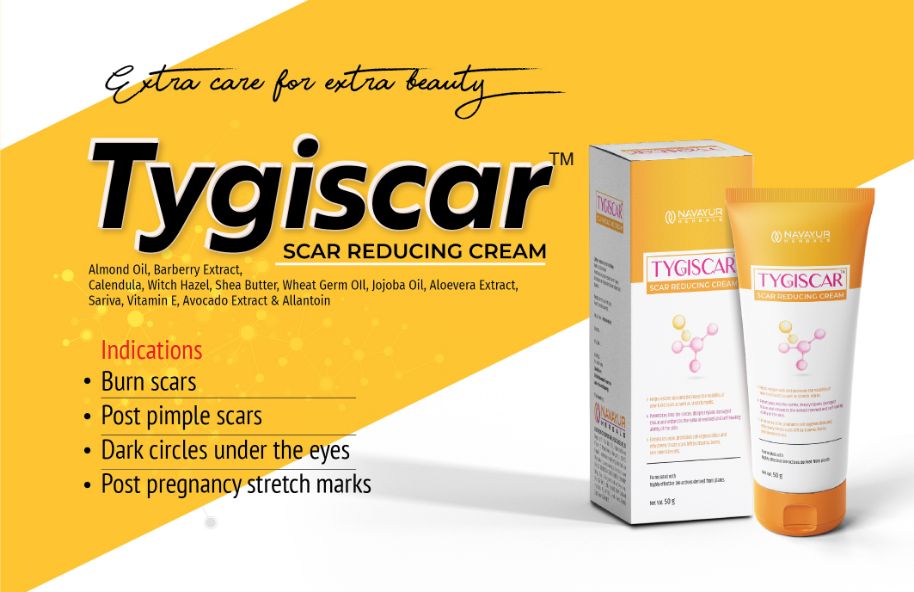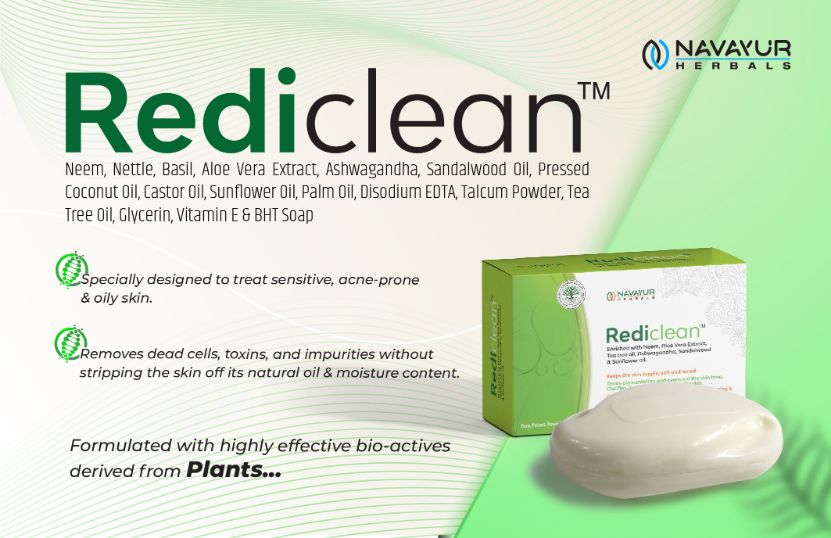Acne is one of the most common skin conditions, triggered by various factors including stress, hormones, and personal care. Ayurvedic medicines have been used for centuries to target acne and its various root causes. Navayur Herbals is a trusted Ayurvedic manufacturer and supplier of a broad range of herbal and Ayurvedic formulations targeting various health conditions. Over the years after intensive research and innovation we have prepared a wide range of oral and topical herbal preparations to get rid of acne of different types. These Ayurvedic medicines comprise the goodness of Lodhra, Shalmali, Turmeric, Chandana, Saariba, Vacha, Manjishtha, and Kushta used for their blood-purifying properties.
Acne can be caused due to bacterial infections, hormonal imbalance, excess oil secretions, junk diet, mental stress, and genetic factors. Navayur Herbals manufactures all the herbal products in a GMP-certified and using 100% organic natural ingredients.


 Effective Herbal Ingredients for Treating Acne
Effective Herbal Ingredients for Treating Acne
In Ayurveda, Acne is called “Yuvanpidika” or Tarunyapitika” due to the inflammation seen in adolescence. At Navayur Herbals we use the following mentioned drugs for manufacturing products highly effective in treating acne.
Nimba (Neem): If there is one herbal ingredient, highly used for its antibacterial properties is Neem. The herb has been used for centuries to reduce inflammation on the skin and soothe aching pimples.
Ghrita Kumari (Aloe Vera): From face washes to face cream, aloe vera is an omnipotent herbal ingredient used for its cooling and moisturizing properties on the skin.
Haldi (Turmeric): Haldi or turmeric is widely used for its anti-inflammatory and antioxidant properties for treating acne.
Chandan (Sandalwood): We also use the goodness of Chandan or sandalwood for treating acne and giving skin a beautiful radiant glow.
 Solutions from navayur
Solutions from navayur
-
Rated 0 out of 5
-
Rated 0 out of 5
-
Rated 0 out of 5
-
Rated 0 out of 5







